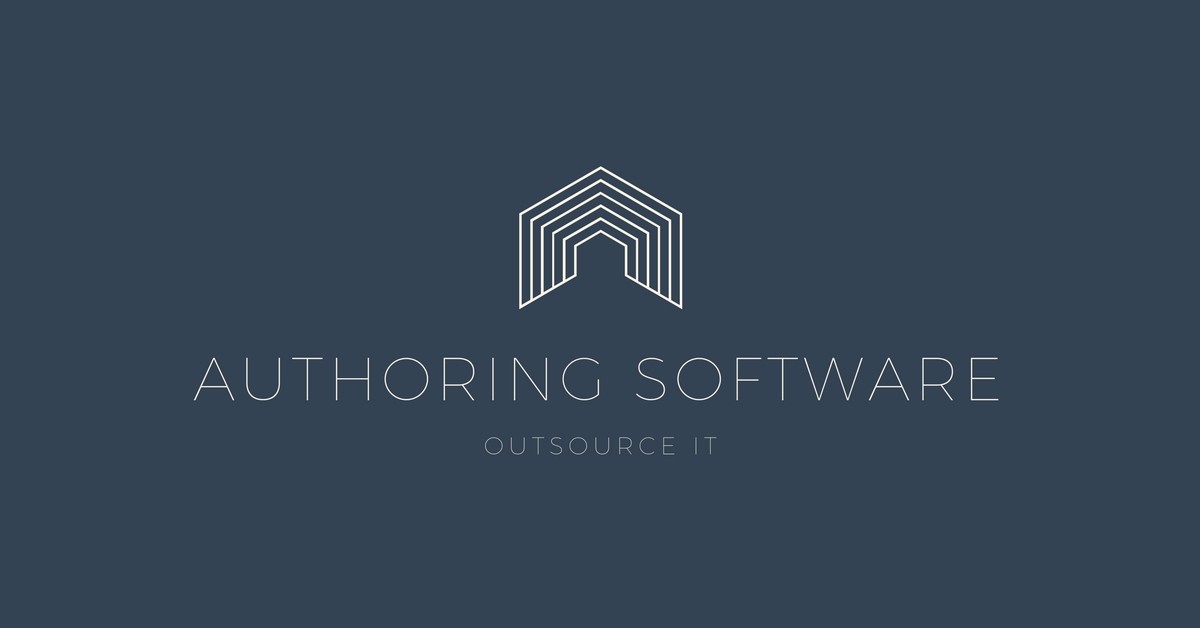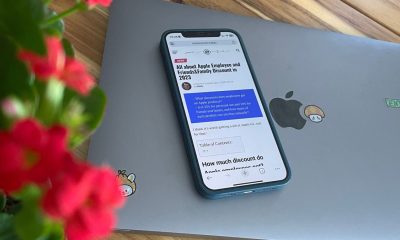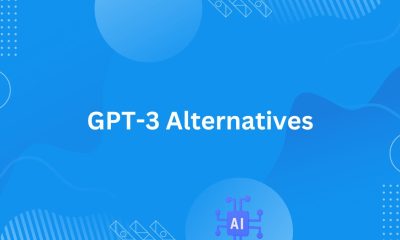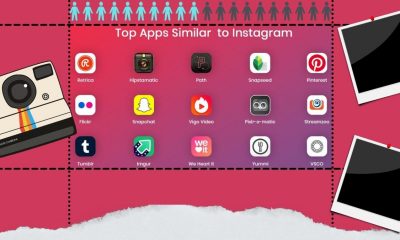Software Development
The Best Course Authoring Software Feature Guide for You

Course authoring software products allow organizations to create engaging and interactive multimedia content for educational purposes. Course authoring software is used by to develop training courses and content that can be consumed in either a corporate or more traditional educational setting.
g2.com › categories › course-authoring
So you need course authoring software like Udemy.
Maybe because I keep whining at my readers that it’s a necessity (it is), or because you want to go freelance and sell courses for other businesses. Perhaps your boss finally caved to your requests for it, or maybe you are a boss and know that your trainers and content designers have been requesting it.
Whatever the reason, you’re seeking the perfect software fit and you’ve found yourself in a tricky spot. You know you need something, but you’re not entirely clear on what that something is.
Videos would be cool, wouldn’t they? And a forum, maybe, because social learning is important. And what’s the deal with gamification?
Whatever the feature, wherever you’re starting, this guide will let you know what’s on the market and what key features to look for.
We break each feature down by explaining how it works, what questions you should ask when considering each software type, and why we think it’s a must-have.
Let’s get started!

#Gamification
How it works
Gamified course authoring software awards points for completion, displays scoreboards to compare learner performance, and establishes goals for learners to reach at the end of each section.
This is an increasingly common feature for learning management software (LMS) systems. If you want to gamify your content, you have to create space for gamification in your course. Look for course authoring software that allows you to create native gamification throughout the design process.
Why it’s a must-have
Gamification has been proven to help users understand complex processes. It allows you to track users’ progress and analyze their performance.
Questions to ask
- How does it break up the material to make it easier for learners to retain the information?
- Does it have a point system?
- Can you track their progress?
- What exactly does the software bring to the learning experience?
#Test/quiz creation
How it works
Test and quiz creation is essential to tracking learner progress. If your course authoring software does not have a built-in method for creating assessments, you should look for another system.
Almost all course authoring software offers some type of assessment feature, so you’ll want to focus on the quality of that feature. You want a quiz creation system that’s easy and intuitive to use, and preferably pushes live in your LMS.
Why it’s a must-have
Quizzes are crucial to knowing how well your content is getting through to your audience. If you can’t measure your content’s efficacy, you have no way of knowing whether you need to change it.
Questions to ask
- Does the software include a test/quiz creation feature?
- Does it allow you to share a test or quiz with your learners?
- Can it be accessed via mobile devices, and is it user-friendly?
- Does it allow you to track user progress?
#Interactive content
How it works
Interactive content allows some level of responsiveness to learner input. This can take the form of in-app answers for learner questions, or exploratory games and simulations.
When you’re creating content, keep in mind how users will engage with it. Interactive content is more entertaining and helps learners retain information better than static presentation. Much like gamification, you’re not looking for course authoring software that is itself interactive, but rather software that gives course designers the space to create such content.
Why it’s a must-have
Interactive content will stick with your learners longer than classic presentations. It allows users to engage with courses more thoroughly, think more critically, and apply learned information to real-life situations more easily.
Questions to ask
- Does your course authoring software include a user-friendly interface for dashboards and discussion?
- Will it integrate with communication software, or does it come with its own communication component?
#Template management
How it works
Templates are a great asset in course design. They take away the pressure of coming up with a format from scratch, and typically look cleaner and more professional.
Templates are downloadable bases used to craft your content, which can be a bonus for the artistically challenged among us. A template management feature—which lets you create templates, and download and save pre-made templates from outside resources—will help you organize your content.

Templates are incredibly useful. Just fill in the blanks.
Why it’s a must-have
More likely than not, you don’t have the time to create your own templates. Having some to choose from within your course authoring software system allows you to focus on the content, rather than the cosmetic details.
Once you’ve amassed a trove of templates, you’ll have to keep them organized. Template management features will make this task easier.
Questions to ask
- Does the software offer templates?
- Does the software offer features specifically designed for content engagement?
- Does the software allow customization?
#Video conferencing
How it works
With the ubiquitous nature of FaceTime and Skype, video conferencing might not seem very exciting. It’s crucial for course authoring software, though, especially if you’re collaborating in your course writing or instructing remotely.
It’s unusual for video conferencing to be built in to course authoring software, but if you’re working with a remote team it might be an uncommon but necessary feature to look for.
Why it’s a must-have
If you’re instructing remotely, video conferencing is the way you’ll reach your learners. If you’re team-teaching, video conferencing can help you plan the course in real time.
On the user end, video conferences can be recorded, rewound, and replayed over and over, making content easier to remember and retain.
Questions to ask
- Is the software compatible with your laptop or phone camera?
- Does it work in-app, or does the software offer third-party integration with FaceTime, Skype, or other video software?
#SCORM compliance
How it works
Shareable Content Object Reference Model (SCORM) combines content packaging—which allows software to run your content automatically—and data exchange (in which your content communicates with your LMS in real time).
SCORM is a comprehensive LMS set of design standards ensuring that all learning management systems can work together. SCORM compliance means your course authoring software creates exchangeable content that can be shared across compliant platforms.
Why it’s a must-have
SCORM has become the baseline platform for most LMSs. Being SCORM compliant will help you share your content with users, improve their experience, and streamline your LMS network.
Without it, you’ll need to make dozens of copies of your content that are compatible with multiple types of learning management systems. SCORM compliance ultimately saves you time and effort.
Questions to ask
- Does your course authoring software specifically state that it is SCORM compliant? (If it doesn’t, it’s probably not.)
#Course publishing
How it works
Publishing your content means users can access it online, from a mobile device, or through a downloadable package, all without a problem. There are several types of publishing software (other than SCORM) that you can use, but course publishing itself is crucial for learner access.
You’ll need to determine whether your content requires course authoring software that pushes to a set LMS or if you want one that packages your content for use across multiple platforms.
Why it’s a must-have
Giving learners the option to access your content offline, via mobile device, or over the internet lets them adapt based on personal schedules and preferences, and ultimately engage with the content on a deeper level.
Questions to ask
- Does your course authoring software come with a course publishing feature?
- If not, does it integrate with a third party publisher?
- Is it SCORM compliant?

#Content import/export
How it works
Content import/export features allow you to upload your content to an external location or bring other content into your course material. It’s a straightforward feature, but necessary: it gives you the ability to widely distribute your content.
Export to share content with learners and colleagues via email. Import interactive elements, infographics, charts, tables, designs, and diagrams. The options are virtually limitless, but only if your course authoring software systems offers a myriad of import/export choices.
Why it’s a must-have
Import/export functionality is vital for good content creation software. Without it, your content may never reach the outside world, benefit from the myriad of helpful elements available to import, or allow you to maximize its full potential. Being able to share and customize your content is essential to creating a diverse and dynamic learner environment.
Questions to ask
- Does your course authoring software offer third-party integration?
- Can it connect to the internet?
- Does it allow you to export your data or import external elements?
- Does it effectively work with the import/export locations you need?
#Storyboarding
How it works
Storyboarding allows you to visually organize your content. Telling stories with content is one of the most effective ways to help users engage with the information, especially if their learning style is more visual.
Storyboarding is also an excellent productivity tool when your schedule doesn’t allow for a lot of complex content planning. Look for this feature if you have complex visual material to communicate, or if you’re a visual thinker who needs to stay organized.

Why it’s a must-have
Without learner engagement, even the best content will fall flat. Storyboarding allows you to get creative with the way you present your content, which will give you better user results.
Questions to ask
- Does the software you’re considering offer content visualization?
- Does it allow you to personalize a dashboard?
- Are the layouts learner paced, or fixed?
- Does it allow you to present your content in a visually pleasing manner?
What are your must-have course authoring software features?
Did I miss any features you hold dear? Have software you want to recommend to other course authors?
-

 Marketing Tips2 days ago
Marketing Tips2 days agoWhat is my Instagram URL? How to Find & Copy Address [Guide on Desktop or Mobile]
-

 Business Imprint3 days ago
Business Imprint3 days agoAbout Apple Employee and Friends&Family Discount in 2024
-

 App Development3 days ago
App Development3 days agoHow to Unlist your Phone Number from GetContact
-

 News4 days ago
News4 days agoOpen-Source GPT-3/4 LLM Alternatives to Try in 2024
-

 Crawling and Scraping4 days ago
Crawling and Scraping4 days agoComparison of Open Source Web Crawlers for Data Mining and Web Scraping: Pros&Cons
-

 Grow Your Business2 days ago
Grow Your Business2 days agoBest Instagram-like Apps and their Features
-

 Grow Your Business4 days ago
Grow Your Business4 days agoHow to Become a Prompt Engineer in 2024
-
Marketing Tips2 days ago
B2B Instagram Statistics in 2024








wow, thanks!